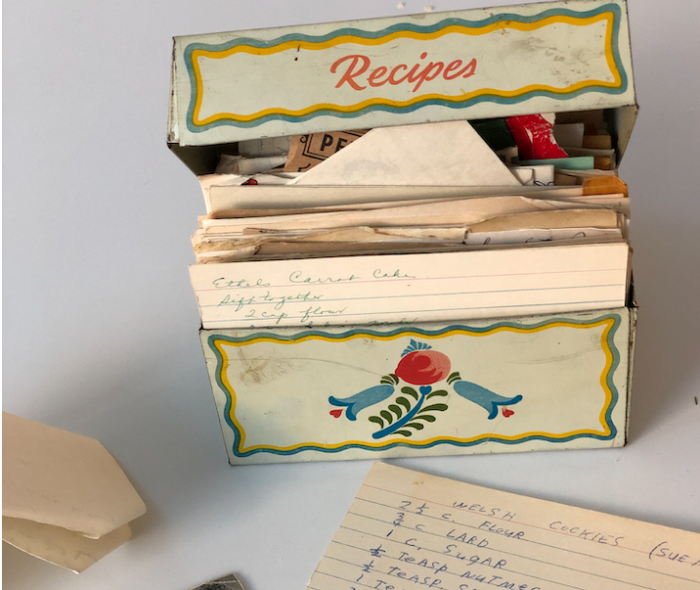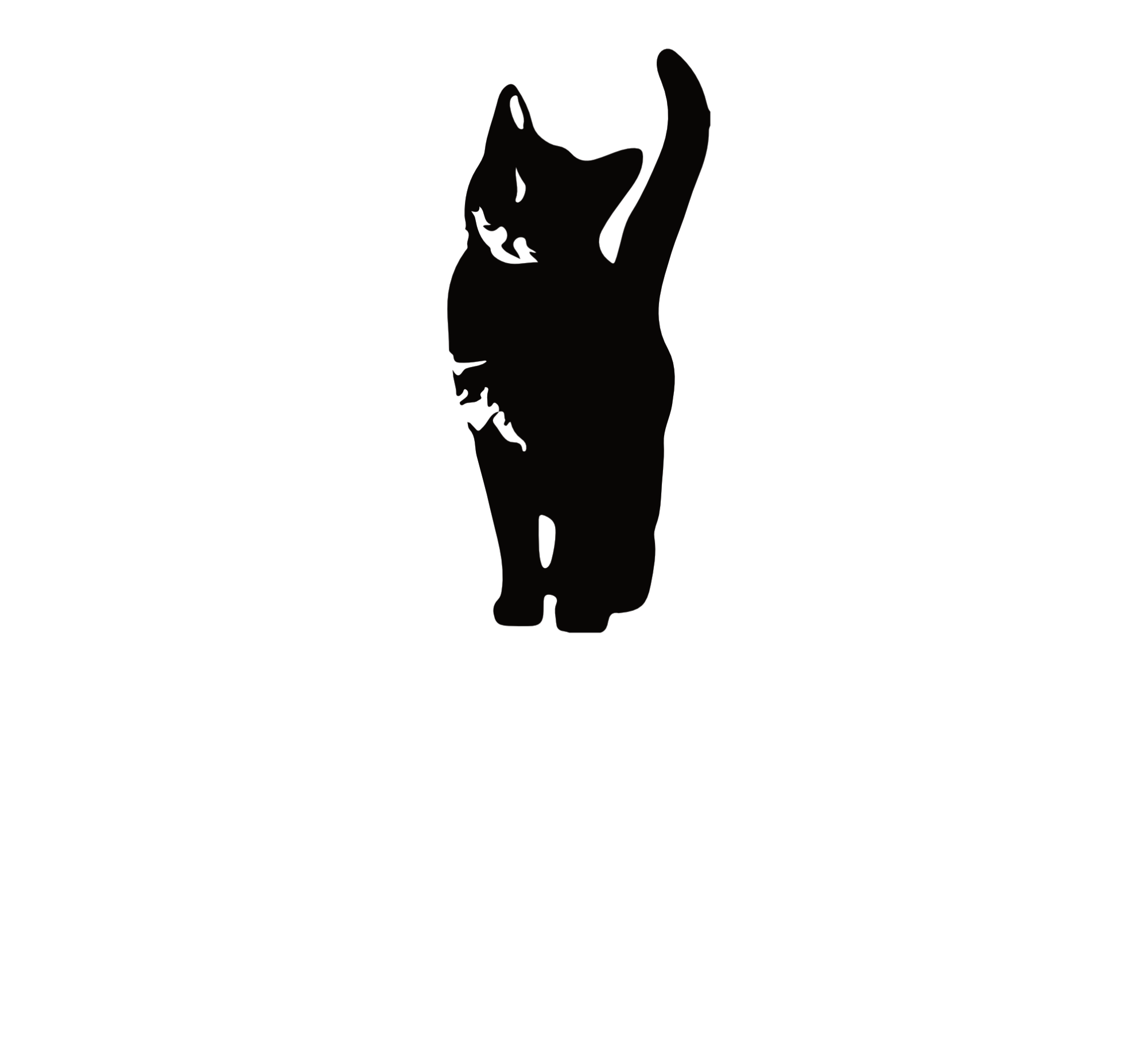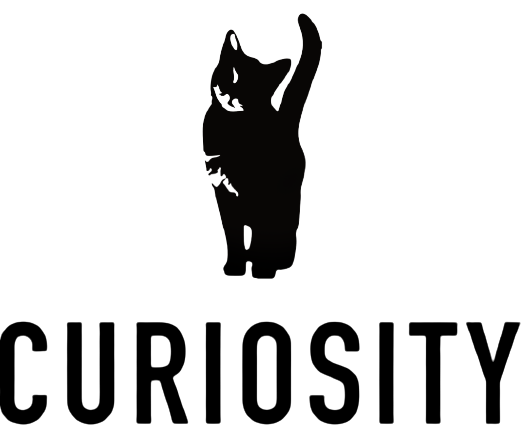As a child I always marveled at my mother’s recipe box (handed down from her mother). It is an overstuffed box that is an amalgam of at least three generations of culinary experimentation from parents, aunts, uncles, friends, and neighbors across the continent. From Welsh cookies to something called Syrian Pie…reviewing these recipes is truly a trip across time and space. Some recipes are scrawled on yellowed index cards, others are written on tissue-thin paper neatly folded into the box. Some are typed others are on old yellowed clippings from newspapers.

On one ordinary day, for no particular reason, my mom gave me the recipe box. I started pulling cards out one-by-one and she provided some thorough explanations of their origin, other explanations were admittedly more probabilistic in nature. It was a great gift as it connected me to my past and to who I am today.
In general people like to be part of something bigger themselves. Whether that’s a family, a church, a club, a company, or any group at all, it is part of the human condition. It provides certainty of who we are and how we are connected to larger whole of society[1]. As you think about creating experiences this holiday season, there are a few lessons in this recipe box that may be useful in experiential design.
Be Who You Are
I oftentimes see people and organizations trying to be someone they are not. Take for example the Geo marque developed by General Motors in 1989. At the time GM was fighting a two-front war. On the luxury side, Cadillac was getting assaulted by European rivals as American consumers’ preferences turned to more Teutonic in nature. On the mass market size things were worse. Inexpensive and high-quality Japanese imports were cutting into their core business.
GM’s solution was Geo[2]. The goal of Geo was to get the ‘youth market’ which had turned to smaller, sportier, and more fuel-efficient vehicles. Since the GM product pipe was a bit thin, they decided to accomplish this goal by rebadging existing nameplates from Japanese manufacturers. The Prizm was a Toyota Corolla, the Spectrum an Isuzu Gemini, the Storm an Isuzu Impulse, and the Tracker a Suzuki Sidekick. Did it work? Some will argue it accomplished its goal, but according to Automotive News GM anticipated 400,000 sales in 1991 and achieved 297,000[3]. The nameplate struggled until 1996 when it was discontinued. It was an unimaginative solution to a tough competitive situation.

In 1990, rather than mimicking someone else, they did something surprising and started the Saturn brand. Saturn was a car company based on the customer experience and had a cult-like following amongst customers[4]. Saturn started from scratch; creating new vehicles, new manufacturing, and a new dealer network. Rather than putting the car at the forefront, GM decided to make the experience the centerpiece of the brand. Sure, there was some product innovation, but the dealer experience was amazing and the focus on the holistic ownership experience resonated well, in particular with younger buyers. Starved of new products for years, it marched on nonetheless until it met its demise under the corporate bureaucratic weight and bankruptcy of GM in 2008.
Connect to Your Heritage
If you ever toured the Guinness Brewery in Dublin, Ireland you will quickly conclude two things; 1) they make excellent beer, and 2) they know what they are doing. As one of the oldest breweries in the world, they have a fairly simple line up and have pride in their product. The brewmasters at St. James Gate continued their work as the American colonies proclaimed their independence and later their own country’s independence from England up to today. While they have made small adjustments to the product over that span to adjust to consumer tastes, the spirit and core product have changed very little.
If you go into any respectable Irish pub today (or perhaps any pub in general) you will always be able to get a Guinness. There will usually be Guinness memorabilia on the wall. The brand strength of Guinness is incredible and inextricably connected to an entire country’s heritage. While Guinness is taking a beating from the COVID pandemic (Guinness is enjoyed in pubs most often), I have no doubt we will be seeing that “black stuff” for years to come. [5]
Many large companies are guilty of complacency in the face of disruptiv

e competition from startups. While start-up are nimble, responsive, and sometimes more innovative than their older rivals, they many times lack two important assets: 1) a large amount of capital and 2) a heritage of success.
While many times that capital is financial, it is also can take the form of social capital. There is a ton of wisdom in many large organizations. This is a blessing and a curse. The curse is that wisdom can blind the organization to what is possible, the blessing is a basis of knowledge that startups don’t have.
Likewise, if a company has been around for a while they are, by definition, a success. It is worth asking, what made your company a success in the past? This very thing will be what will continue to make you a success in the future. It might not be the same idea or product that will make you a success in the future, but it will likely be the same competency. If your company has a history of optimizing systems, do that. If your company has a history of being excellent in sales and marketing or production do that. Embrace the past to figure out the future. The trick is not letting the past blind you to opportunities of the future.
There is Beauty in Imperfection
If you listen very closely to Led Zeppelin’s ‘Fool in the Rain’ you can hear John Paul Jones ever so slightly fat finger multiple keys in his solo (or at least it sounds that way). At the beginning of the Police’s Roxanne, you heard a slight flange of Andy Summer’s guitar, likely due to a loose recording tape[6]. Mona Lisa’s imperfect smile, Marilyn Monroe’s mole, the Leaning Tower of Pisa, the asymmetric design of the Millennium Falcon, the inconsistencies in The Shining, and countless other objects of beauty are well…imperfect.
Like my mother’s motley and tattered collection of old recipes, beauty can be found in the imperfections. The Japanese call this wabi-sabi[7], which is a perspective that accepts and embraces the temporary and imperfect. It recognizes that the dogged pursuit of perfection can many times lead you to only anxiety and sadness.
While I have often written about the importance in being consistent in providing a customer experience, you can “six sigma” the beauty out of the customer experience. While consistency is important, it is just as important to have some room for improvisation. The colorful bartender in the hotel bar or the unusual swirl in the wood veneer of a coffee table or tabletop is remarkable, but certainly not conforming to perfection.
While some things you definitely want to be perfect (such as the functioning of an airliner or nuclear reactor) other things people want to have some character, something different and new, something…well imperfect.
It’s worth thinking about what the imperfections in your customer experience are today and whether they should be removed or preserved. Surely, a long wait time is something you will likely want to remove[8], but perhaps that waitress with a sassy attitude that offends 15% of your clientele and makes 85% of them smile is something you may want to keep.
Turn Liabilities to Assets
So often employees (particularly younger ones) look at companies with long heritages as slow, stuck in their ways, and lacking innovation. Sometimes these allegations are valid. However, it doesn’t have to be that way. If you work for a big company, you can transform your size and age from a perceived liability to an asset. These large organizations can look to their past to understand the brand essence and find inspiration to apply that heritage to the future. These companies should be wary of blotting out all of their idiosyncrasies without first finding out if they are cherished by customers. Likewise, corporate ‘resets’ rarely work. Culture is tenacious stuff, if you really want to reset your company, best to spin off a subset of it somewhere isolated from the mothership.
Likewise, if you work at a startup or younger company there is learning here too. You don’t need to be perfect to be loved. Take solace in that you too have a history, and that history is usually in the passion and infectious zeal of the founders. Use that to your advantage and don’t act how you think startups should behave. You don’t need ping pong tables and lattes or wear hoodies to work every day. Lean into the DNA of what your company is all about. At the end of the day being authentic to who you are will win the day.
Notes:
[1] https://www.simplypsychology.org/social-identity-theory.html
[2] https://www.makesthatdidntmakeit.com/geo
[3] https://www.autonews.com/article/20111031/CHEVY100/310319911/identity-crisis-geo-gave-dealers-an-import-that-wasn-t-or-was-it
[4] https://www.forbes.com/2010/03/08/saturn-gm-innovation-leadership-managing-failure.html?sh=1d4fcafa6ee3
[5] https://www.irishpost.com/news/sales-of-guinness-in-ireland-down-following-sharp-decline-in-demand-190390#:~:text=Guinness%20sales%20were%20down%20across,halved%20to%20%C2%A32.1bn.
[6] https://www.treblezine.com/27339-10-great-songs-with-mistakes/
[7] https://www.psychologytoday.com/us/blog/between-cultures/201701/the-beauty-imperfection
[8] But perhaps not, if it is something that adds to the memorability of the experience (e.g., waiting to get into a rock concert with friends)



